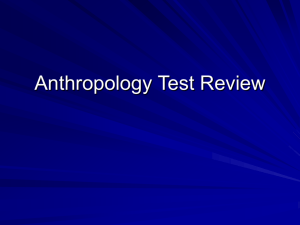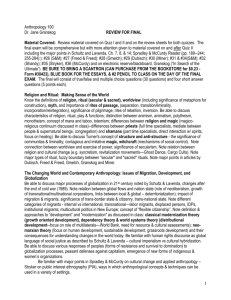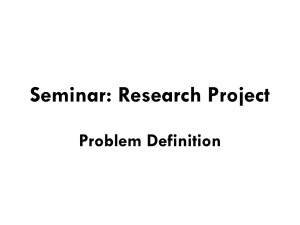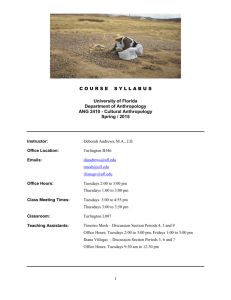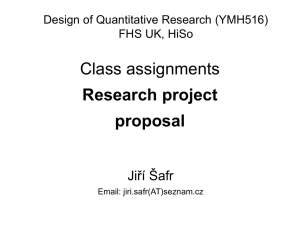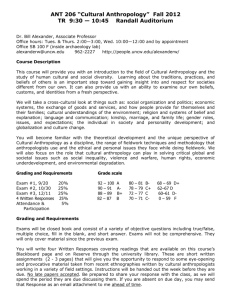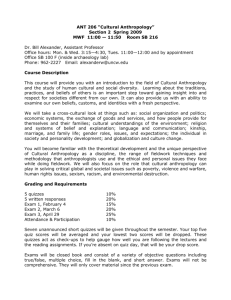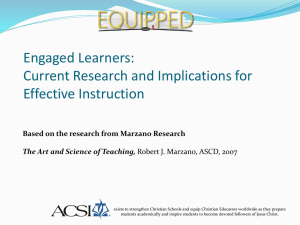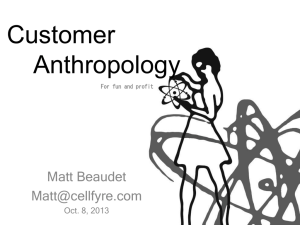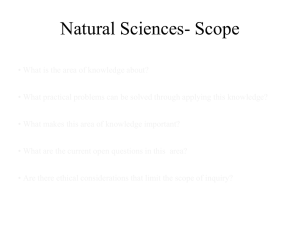Evolution-Creation Controversy
advertisement
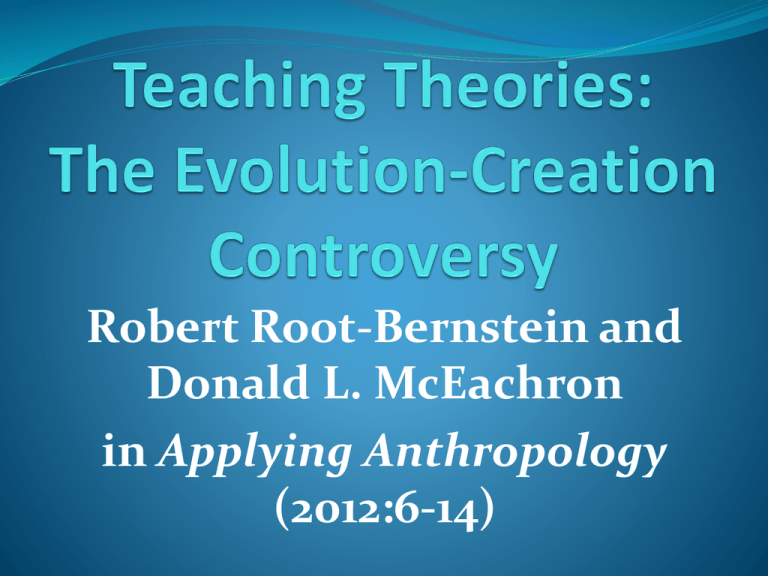
Robert Root-Bernstein and Donald L. McEachron in Applying Anthropology (2012:6-14) Difference between “I have a theory” and a scientific theory Test or observe Evidence, testability Correctable Tentative “The conclusions reached by science are only contingent truths” (8) Productive of new knowledge & hypotheses What ideas fit as scientific theory? Evolution Creationism Observable Yes--mechanism of natural selection Fossil Genetic But not as a replay Correctable Modified although overall theory supported Productive Yes: Generates new hypotheses Observable No—not then, not now Correctable No—Celebrates unchanging ideas Productive “unobservable, untestable, uncorrectable creator” (12) bounded & unbounded (8-9) God’s will (unbounded) can’t be tested Unbounded: can explain anything Bounded: must be limited in order to be a scientific explanation How does “Teaching Theories” portray relation of evolutionary theory and creation belief? Different domains Theory and belief, totally different explanations Creationism should be taught In religion class “Teaching Theories” is ©1982 Add genetic evidence and Glorified view of science, computing power but example is evolving Best adapted—in a pests particular environment (9) The idea of different Fittest—in a specific domains, entirely environment (10) separating theory from Not just simple complex belief, may be too tidy Sometimes complex Science makes us simple “humbly aware” (13) but their over-simplifications No directional arrow of can seem arrogant evolution Benjamin Z. Freed in Applying Anthropology (2012:15-20) Today, fewer “Creationists”—but might talk about “Intelligent Design” Central Claim: It’s too complex! Must be a design and a Designer Stickers: “Theory, not a fact” Evolution is not about the origin of life Singles out evolution—consider atomic theory or theory of gravity Misunderstands scientific theory Intelligent Design: No testable hypotheses (Freed: 17) Science is not a monolith Evolution shows “so-called irreducibly complex structures can evolve from non-irreducible complexity” (17) Difference between “let’s have a debate” and a scientific debate • Not necessarily two sides; differing positions • Different evidence or interpretations • Ideally results in convergence or modification • Often prompts return to empirical evidence • Good example is Homo floresiensis (LS:23) • competing hypotheses measured by evidence It’s not a question of whether or not students and teachers believe in evolution. Scientists don’t believe in it; they accept this overarching scientific theory. --Freed in Applying Anthropology (2012:19) Lavenda & Schultz, Module 1 Trickier? Compare Desana creation story and science (LS:19) Both equally myths and stories = say something about world, make life meaningful In the anthropological use of myth BUT – scientific stories must be compared to evidence and scrutiny (LS:20) Must be rejected if they don’t fit (LS:21) The Interplanetary Aliens Hypothesis (LS:24) May not ever be definitively disproved, but without evidence it “holds no scientific interest” Lavenda & Schultz, Module 1 Gentler? We may be able to move, as philosopher of science Philip Kitcher urges, “beyond the simple opposition of proof and faith. . . . Between these extremes lies the vast field of cases in which we believe something on the basis of good—even excellent—but inconclusive evidence” (1982, 34). (LS:26).
